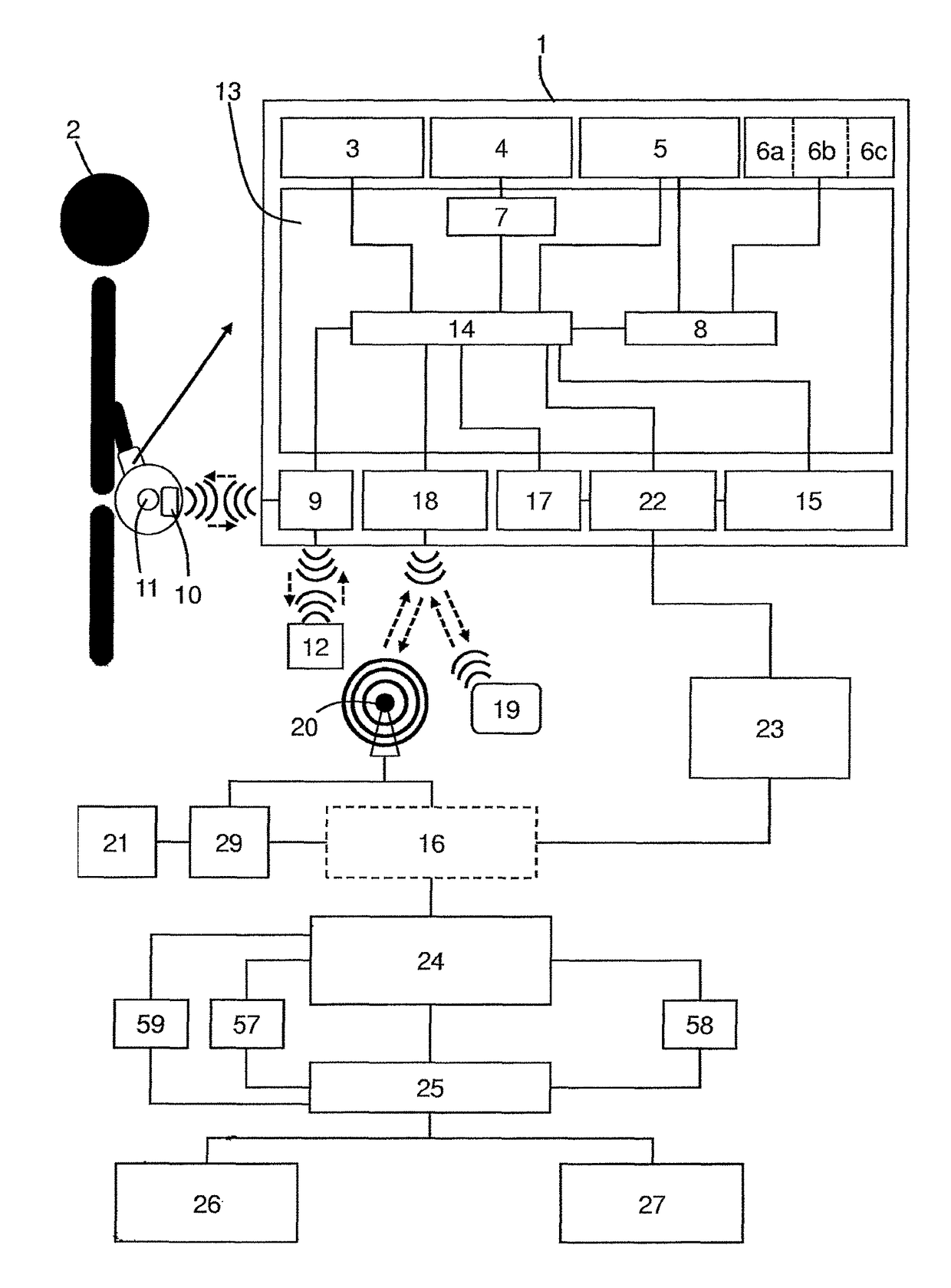Method and device for mobile training data acquisition and analysis of strength training
a technology for mobile training and data acquisition, applied in the field of mobile training data acquisition and analysis of strength training, can solve the problems of lack of continuous analysis of training data in strength training, and insufficient one-time acquisition of training data in a training uni
- Summary
- Abstract
- Description
- Claims
- Application Information
AI Technical Summary
Benefits of technology
Problems solved by technology
Method used
Image
Examples
Embodiment Construction
[0108]FIG. 1 shows an overview in the form of a block diagram of an embodiment variant of the arrangement according to the invention. In FIG. 1, a mobile device 1 is, in an exemplary manner, attached to the wrist / forearm 39 (FIG. 5) of a user 2. Further possible options of the body segment attachment are depicted in FIG. 5. The mobile device 1 contains a user interface 3, for example in the form of keys / buttons. A display unit 4 shows the user 2 a graphical user interface 7 and can itself be embodied as a user interface. A second storage unit 5 contains predetermined movement data, consisting of the characteristic variables of set movement patterns of N strength-training exercises using a training utensil Y. The mobile device 1 contains an accelerometer 6a, a rate sensor (gyroscope) 6b and a magnetometer 6c. A processor 13 inter alia recalls the predetermined movement data from the second storage unit 5 and obtains raw sensor values from the sensors 6a and / or 6b and / or 6c. Reworked ...
PUM
 Login to View More
Login to View More Abstract
Description
Claims
Application Information
 Login to View More
Login to View More - R&D
- Intellectual Property
- Life Sciences
- Materials
- Tech Scout
- Unparalleled Data Quality
- Higher Quality Content
- 60% Fewer Hallucinations
Browse by: Latest US Patents, China's latest patents, Technical Efficacy Thesaurus, Application Domain, Technology Topic, Popular Technical Reports.
© 2025 PatSnap. All rights reserved.Legal|Privacy policy|Modern Slavery Act Transparency Statement|Sitemap|About US| Contact US: help@patsnap.com



